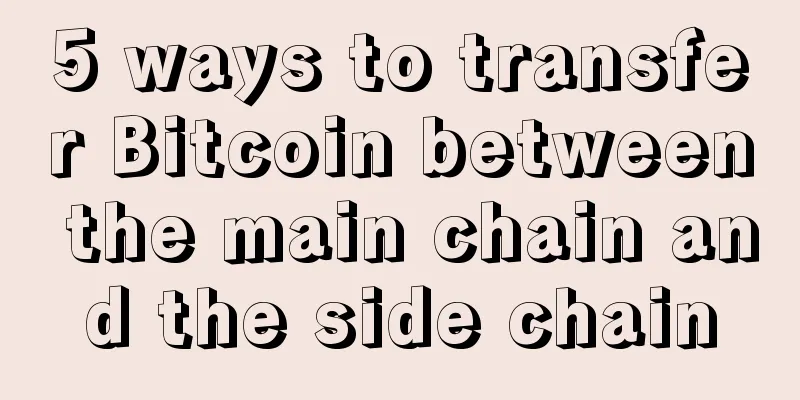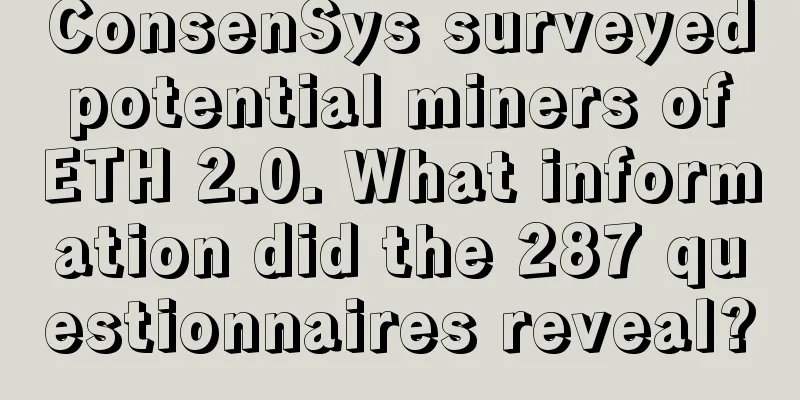5 ways to transfer Bitcoin between the main chain and the side chain

|
The concept of sidechains has received a lot of hype from the Bitcoin community since it was first publicly discussed in 2014. Essentially, sidechains allow users to transfer Bitcoin between the Bitcoin blockchain and other blockchains with different capabilities. Sidechains currently under development include RSK (Rootstock), a more flexible smart contract platform similar to Ethereum; Mimblewimble, an experimental method for improving the privacy and scalability of the Bitcoin blockchain; and Bitcoin Hivemind, a blockchain-based prediction market platform. To transfer bitcoins from the main chain to the side chain, these bitcoins will first be frozen on the main chain and then activated on the secondary chain; this is the two-way peg. There are currently 5 well-known solutions, depending on who or what controls these funds frozen on the Bitcoin main chain for the two-way peg mechanism. 1. Single custodianThe simplest way to implement a two-way peg between Bitcoin and a sidechain is by sending funds to a single custodian on the mainchain and then activating the funds on the sidechain. However, there is an obvious problem with this: it is a completely centralized solution. In reality, having funds frozen by an institution and sent to a sidechain is not much different than withdrawing funds from a Bitcoin bank like Coinbase or Xapo. In this way, you can think of the internal ledgers of these Bitcoin banks as sidechains to Bitcoin. If a centralized institution is to have full control over these frozen funds, it would be better to extend the functionality of these funds through a centralized server rather than a new blockchain. 2. Alliance ModelThings get more interesting if you use a consortium of notaries instead of a single custodian via a multi-signature address approach where a consortium of entities must sign off on the movement of funds on the sidechain, so stealing the frozen bitcoins on the mainchain would require breaching more institutions. Blockstream recently released a "Powerful Federation" whitepaper (whitepaper download), which is essentially a federated two-way peg system. Liquid is a sidechain created by Blockstream that uses the powerful federation model. This sidechain is used to transfer Bitcoin between centralized Bitcoin institutions, such as exchanges, and is faster than the public Bitcoin blockchain. One of the main selling points of single-custodian and federated sidechain solutions is that they do not require any changes to the Bitcoin protocol. 3. SPV SidechainSPV sidechains are the original vision of a decentralized two-way peg in the original Sidechains White Paper. SPV sidechains use SPV proofs to transfer bitcoins to the sidechain. SPV proofs are a method for proving the existence of a transaction by proving that a small amount of data is associated with the existence of a transaction in a specific block. In other words, after receiving a transaction that marks the movement of bitcoins between the main chain and the side chain in a block, the SPV sidechain will transfer bitcoins between the main chain and the sidechain. However, the SPV sidechain requires a soft fork of Bitcoin. Unlike the other two-way peg mechanisms in this article, SPV sidechains do not directly give control of the mainchain Bitcoin to a custodian; however, the ability of a majority of miners to generate and create fraudulent SPV proofs gives them indirect control over those funds, including the ability to send them. That being said, there are ways to mitigate this issue. 4. Drive chainDrivechain is an alternative to sidechains mentioned in the Sidechain White Paper. In drivechain, miners signal the current state of the sidechain. In other words, miners are essentially fund custodians who can help users who want to transfer their bitcoins back to the main chain to unfreeze their funds. The Drivechain concept was developed by Bloq economist and Bitcoin Hivemind founder Paul Sztorc. One of the main tenets of Drivechain is that miners are the most problematic custodians of sidechain funds from a game theory perspective. Sztorc said that sidechains could be structured in the same way that miners could orchestrate the theft of frozen funds from the mainchain. Sztorc explained the impact of this in his original post:
Like SPV sidechains, drivechains also require a soft fork of Bitcoin. 5. Hybrid ChainIt is also possible to combine the above methods of obtaining a two-way peg. For example, one concept explored by RSK Labs is combining drivechains with a federation model. In other words, miners and federation members must sign and confirm the transfer of bitcoins between the main bitcoin chain and the sidechain. As mentioned before, drivechains require a soft fork of Bitcoin, so RSK currently only uses the federation model. Although the federation model is combined with the drivechain model, if 90% of Bitcoin miners decide to merge mining with RSK, the federation model will not have any effect on the RSK blockchain. Bonus: Extension Blocks and Soft-Forked SidechainsAnother idea that is similar to the sidechain concept is extension blocks. Much like sidechains, extension blocks allow users to choose transaction blocks with different validation rules. The key difference between traditional sidechains and extension blocks is that upgraded Bitcoin full nodes verify transactions on extension blocks. This means that extension blocks are more closely tied to the main Bitcoin network than traditional sidechains. The degree of separation between the extension block and the Bitcoin network is almost non-existent, which means that if there is a problem with the extension block, it will more easily cause problems for the entire Bitcoin network. For sidechains, there is a separation layer between the Bitcoin main chain and the sidechain, which also means that the main chain will not be affected by sidechain problems. Therefore, there are more companies researching sidechains than companies researching extended chains, such as RSK. Recently, Bitcoin Core contributor Johnson Lau published a draft Bitcoin Improvement Protocol (BIP) for effectively increasing the Bitcoin block size limit using extension blocks. Given that extension blocks can be implemented via a soft fork, the characteristics of extension blocks are essentially user-selective. Even in the case of extension blocks with larger block size limits, users are not forced to upgrade and validate or propagate larger blocks. Those who wish to use 1MB blocks can continue to do so, while those who want to experience larger blocks can implement extension blocks on an opt-in basis. While users can opt-in to using extension blocks, miners must upgrade and continue mining valid blocks on the main chain. The sidechain that needs to be soft forked is similar to the extension block. The main difference is that the soft fork sidechain performs hybrid mining instead of main chain mining. This post is based on a recent presentation by Rootstock Labs Chief Scientist Sergio Lerner on Zeppelin’s YouTube channel and a conversation with Blockstream CEO Adam Back. |
>>: Bitcoin Jesus Roger Ver: Qtum Quantum Chain deserves everyone's attention
Recommend
What kind of man is the most loyal?
What kind of man is most likely to change his min...
Why would you rather be single than date these guys?
Better to be single than to date these men with s...
Palmistry shows who is destined to cheat after marriage
Palmistry shows who is destined to cheat after ma...
Is it good for a boy to look like a girl? Personality analysis of a boy who looks like a girl
We all know that some boys may not look very masc...
Judging from one's face, who has no fixed place to live
Judging from one's face, who has no fixed pla...
Illustration: What does a mole on a woman's chin mean?
Modern women consider fair and flawless skin as b...
Whether your marriage is happy or not depends on the palmistry
Want to know what your future marriage will look ...
Apple co-founder Wozniak brings EFFORCE project to 2020 World Blockchain Conference
From December 5th to December 6th, the 2020 World...
What does it mean when there are ten dustpan lines on both hands?
The more winnowing dustpans there are on the fing...
Which type of people have better fortune as they get older?
The changing characteristics of fortune are diffe...
What kind of face does a boy have to have to be rich?
Whether a boy is rich or not can be seen from his...
Island pattern in palmistry
What is Island Pattern? The hollow marks that app...
Peter Todd: Banks have long had ideas about blockchain
When many people think of computers and robots re...
Diagram of three-bend nose
Three bends and three curves of the nose Characte...
How to recognize people by face How to recognize people by face
How to recognize people through face? "Judgi...









